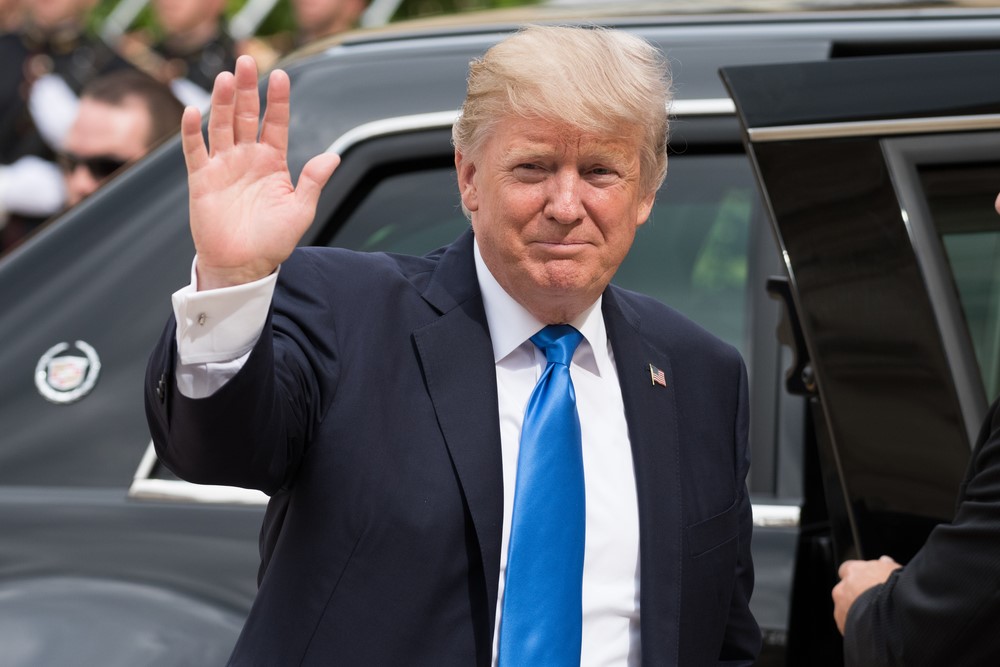In the second quarter, the U.S. economy grew at a blistering 4.1% annual rate.
That’s a good thing for business owners, their employees and investors like us.
Stronger economic growth generally leads to greater consumer spending, more business investment, new jobs, higher corporate profits and rising stock prices.
In fact, that’s exactly what we’ve seen over the last few months. So the better than 4% growth rate is not entirely unexpected.
It’s also double the average growth rate under former President Obama’s eight years in office.
Obama is not entirely to blame for this, of course.
The national economy is too big, too complicated and too intertwined with the rest of the world for one man – even the president of the United States – to determine its direction.
Plus, Obama inherited a royal mess when he took office on January 20, 2009. The financial crisis and the Great Recession were well underway.
(And so was the bear market that accompanied it. The Dow bottomed at 6,443 just six weeks later.)
However, Obama’s economic policies, including higher taxes, massive new regulations, and the unpopular and oddly named Affordable Care Act, did not make things easier for entrepreneurs and business people.
Perhaps the worst of these was the mountain of government red tape.
Senator Mike Lee famously posed next to a display of the 2013 Federal Register, containing more than 80,000 pages of new rules, regulations and notices all written and passed by unelected bureaucrats.
It was 8 feet high.
If you’re a small-business person struggling to succeed in a highly competitive economy, it’s not only expensive to comply with all those regulations… it’s impossible to even know what they are. (And let’s remember this was just one year’s worth.)
Most small businesses are massively noncompliant, without even realizing it… and open to potential lawsuits as a result.
President Trump worked to reverse this trend, making it policy that for every new federal regulation, two regulations have to be repealed.
Regular readers of this column know that I am not a big fan of Donald Trump. (Or Hillary Clinton. I voted for neither.)
Many of the things our Chief Executive says and tweets are entirely indefensible.
Yet let’s give credit where credit is due. Most of what he has done for the economy has been positive.
Critics said reforming the U.S. tax code – one of the world’s most uncompetitive – would not ignite economic growth.
They were wrong.
They said corporations would not use the money they saved to boost capital investments, hire more employees or increase their compensation.
They were wrong three more times.
(Since the tax cut, black and Hispanic unemployment have hit 50-year lows. The Labor Department reports that worker bonuses have hit the highest level ever recorded. And the Commerce Department reports that wages and salaries are growing 24% faster under Trump than under Obama.)
Even Trump’s tariff policies – which I have editorialized against repeatedly – look like they will ultimately bear fruit.
Two weeks ago in Las Vegas, I had dinner with publisher and former presidential candidate Steve Forbes.
Like me, Forbes opposes protectionist policies on principle. Countries with the freest markets experience stronger growth, greater productivity and higher personal incomes.
Yet I pointed out to Steve that the market was acting like the tariffs wouldn’t stick – that since no one wins in a trade war, it ultimately wouldn’t be fought.
He agreed, adding, “If the market thought a real trade war was in the works, the Dow would plunge 5,000 points immediately.”
I pointed this out to Members at The Oxford Club’s Private Wealth Seminar in Whistler, British Columbia, last week, telling them representatives of the U.S. and our trading partners might be getting together behind the scenes to work out a solution.
If tariffs came down on both sides then each could save face and call it a win.
Two days later President Trump announced a trade war ceasefire with the European Union – with no new tariffs until a final agreement is reached.
Can something similar with China be far behind?
If Trump negotiates a reduction in European and Chinese tariffs on American products – simultaneously boosting U.S. exports and lowering the cost of imports – he will have pulled off another win for American corporations, consumers and stock market investors.
Critics, of course, are already claiming that the new 4% growth rate won’t last.
And they may be right. Growth overseas is fading. And the Fed is intent on taking interest rates significantly higher.
Yet even 3% GDP growth would be a tremendous boost.
After all, that’s not 1% better than 2% growth. It’s 50% better.
And that bodes well for consumer confidence, capital investment, corporate profits and equity prices.
Good investing,
Alex
